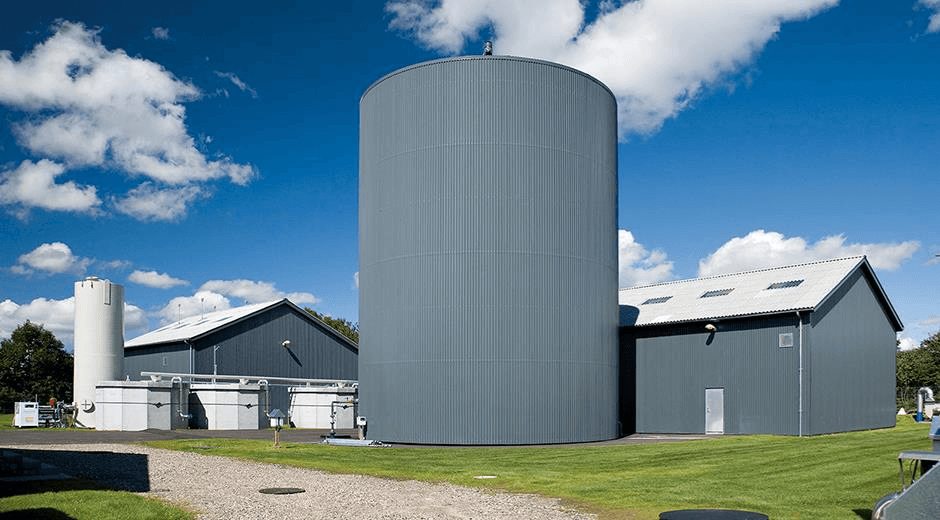Agronomic benefits of an integrated approach for optimisation of anaerobic digestion process
By Jared Nyang’au, ESR 3
Context
The European Green Deal has identified biogas from the anaerobic digestion of biowastes as one of the key renewable gases to accelerate the clean energy transition and increase Europe’s energy independence from unreliable suppliers and volatile fossil fuels. To meet the increasing energy demand and utilise available recalcitrant biomass for biogas production, biogas plants should consider incorporating pre-treatment steps for biomass prior to anaerobic digestion and/or optimising the reactors’ operation conditions aimed at improving the degradability of the biomass for higher biogas yields.

Winter wheat and spring barley cereal crops in micro-plots field experiment fertilised with digestates obtained from electrokinetic and ultrasonication pre-treatments and digested in either primary or secondary anaerobic digestion steps.
Challenges
The increasing use of recalcitrance biomass such as straw and deep litter results in 40-70 % of the organic matter in the digestate not fully degraded, resulting in a digestate with high residual methane potential. Additionally, the hard-to-digest biomass requires much energy to mix in the reactors, resulting in high net energy use. The digestates’ high organic matter content poses high risks of greenhouse gas emissions during digestate storage and field application. Moreover, the resultant digestate with high dry matter content results in high ammonia losses via volatilisation if surface-applied, and it potentially induces nitrogen immobilisation when injected, reducing the fertiliser value of the digestate.
More focus on anaerobic digestion optimisation is given to biogas and methane production, with digestate quality being overlooked. Therefore, in ensuring sustainability and numerous benefits from the anaerobic digestion process where GHG emissions potential and digestate quality are considered, a paradigm shift is needed where optimisation for higher biogas yields and higher concentrations of nutrients to replace synthetic fertilisers is prioritised. This could result in a striking balance between the two approaches.

Full-scale biogas plant at Aaarhus University Foulum.
Results
In recently published results from Jared’s PhD project, they evaluated the effects of two full-scale pre-treatment techniques (electrokinetic and ultrasonication) in a two-step anaerobic digestion digestate on the nitrogen fertiliser value by injection or surface banding to cereal crops. They found that the pre-treatment techniques tended to increase nitrogen fertiliser replacement value in the digestates. Extending the retention time of biowastes in the digesters by incorporating a secondary digestion step increased the available nitrogen in the digestates. It also stabilised digestates, potentially replacing more mineral nitrogen due to improved fertiliser value without negatively affecting the soil carbon sequestration.
In a micro-plot field experiment, they found that extending the retention time of biowastes in the digesters, on average, increased the winter wheat nitrogen uptake from 39 % to 42 % following digestate surface banding application and from 75 % to 86 % following digestate’s injection into the soil.

Lab-scale continuous stirred tank reactors for anaerobic digestion.
Conclusions
Incorporation of biomass pre-treatment steps and optimising anaerobic digestion parameters such as retention time may be economically profitable, as they tend to improve fertilising properties of the digestates, such as available nitrogen content, viscosity and dry matter, alongside increasing biogas production with a positive energy balance.
Related publications
Nyang'au, J.O., Moller, H.B., Sorensen, P. 2022. Nitrogen dynamics and carbon sequestration in soil following application of digestates from one- and two-step anaerobic digestion. Sci Total Environ, 851(Pt 1), 158177
Nyang'au, J.O., Møller, H.B., Sørensen, P. 2023. Effects of electrokinetic and ultrasonication pre-treatment and two-step anaerobic digestion of biowastes on the nitrogen fertiliser value by injection or surface banding to cereal crops. Journal of Environmental Management, 326, 116699.
